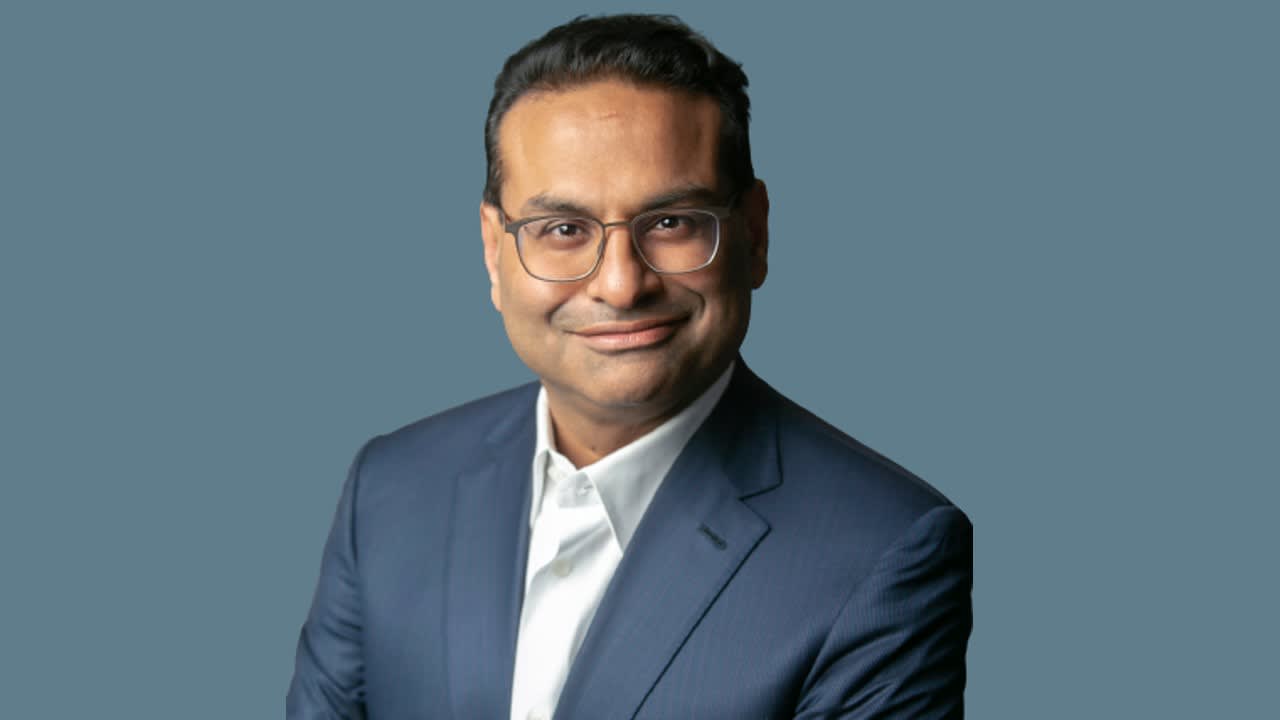Laxman Narasimhan’s Leadership Journey: Starbucks Ceo Laxman Narasimhan

Laxman Narasimhan, the current CEO of Starbucks, boasts a distinguished career path marked by significant leadership roles in global consumer goods companies. His journey, spanning across PepsiCo and Reckitt Benckiser, provides valuable insights into his leadership style and management approach.
Narasimhan’s Career Trajectory
Narasimhan’s career journey began at PepsiCo, where he spent 12 years in various leadership roles, demonstrating his commitment to the consumer goods industry. His initial roles involved market research and strategic planning, allowing him to gain a deep understanding of consumer behavior and market trends. He then transitioned to senior leadership positions, managing key brands like Quaker Oats and Tropicana. This experience exposed him to diverse product categories, branding strategies, and market dynamics, equipping him with a comprehensive understanding of the consumer goods landscape.
Key Accomplishments at PepsiCo
During his tenure at PepsiCo, Narasimhan made significant contributions, leaving a lasting impact on the company’s growth and market presence.
- Driving Growth and Innovation: Narasimhan played a pivotal role in driving growth and innovation across PepsiCo’s portfolio of brands. He led the development and launch of new products, revitalized existing brands, and spearheaded strategic partnerships, contributing to the company’s overall success.
- Building Strong Teams: Narasimhan is known for his ability to build high-performing teams and foster a culture of collaboration and innovation. He empowered his teams to take ownership of their projects, providing them with the necessary resources and support to achieve their goals.
- Global Perspective: His experiences in diverse markets across North America, Europe, and Asia gave him a global perspective, enabling him to adapt strategies to different cultural contexts and market conditions.
Leadership Style and Management Approach
Narasimhan’s leadership style is characterized by a combination of strategic vision, data-driven decision-making, and a focus on building strong relationships with stakeholders. He is known for his ability to:
- Develop Clear Vision: Narasimhan is a visionary leader who sets clear goals and communicates his vision effectively to his team. He inspires and motivates his team to work towards a common goal, ensuring everyone is aligned with the company’s strategic direction.
- Data-Driven Decision Making: Narasimhan emphasizes data-driven decision-making, using data analytics and insights to inform his strategies and guide his team. This approach ensures that decisions are based on objective information and lead to better outcomes.
- Building Strong Relationships: Narasimhan understands the importance of building strong relationships with stakeholders, including employees, customers, and partners. He fosters open communication, actively listens to feedback, and builds trust through collaboration and transparency.
Narasimhan’s Experience at Reckitt Benckiser
After PepsiCo, Narasimhan joined Reckitt Benckiser, a global consumer goods company known for its diverse portfolio of health, hygiene, and home care products. He served as CEO of the company from 2019 to 2022, leading the organization through a period of significant transformation.
Key Accomplishments at Reckitt Benckiser
Narasimhan’s leadership at Reckitt Benckiser was marked by several notable achievements, demonstrating his ability to navigate complex business environments and drive positive change.
- Driving Digital Transformation: Narasimhan recognized the importance of digital transformation and invested heavily in technology to improve operational efficiency, enhance customer experience, and strengthen Reckitt Benckiser’s market position.
- Optimizing Portfolio: Narasimhan streamlined Reckitt Benckiser’s portfolio, divesting non-core businesses and focusing on key brands that aligned with the company’s strategic goals. This move allowed the company to allocate resources more effectively and enhance its focus on its core competencies.
- Strengthening Sustainability Initiatives: Narasimhan emphasized sustainability as a core principle of Reckitt Benckiser’s operations, implementing initiatives to reduce the company’s environmental footprint and promote ethical sourcing practices.
Leadership Style and Management Approach at Reckitt Benckiser
Narasimhan’s leadership style at Reckitt Benckiser further solidified his reputation as a strategic and results-oriented leader. He continued to demonstrate his commitment to:
- Strategic Vision: Narasimhan developed a clear vision for Reckitt Benckiser, emphasizing innovation, sustainability, and customer-centricity. He communicated this vision effectively to his team, inspiring them to work towards a common goal.
- Data-Driven Decision Making: Narasimhan’s data-driven approach to decision-making continued at Reckitt Benckiser. He leveraged data analytics and market insights to guide his strategic decisions, ensuring that the company was making informed choices based on objective information.
- Building Strong Relationships: Narasimhan maintained his focus on building strong relationships with stakeholders, fostering open communication and collaboration across all levels of the organization.
Starbucks under Narasimhan’s Leadership

Laxman Narasimhan took the helm of Starbucks in April 2023, inheriting a company navigating a complex landscape of economic challenges, shifting consumer preferences, and a growing focus on sustainability. His leadership has been marked by a commitment to reinvigorating the Starbucks experience and positioning the company for long-term growth.
Strategic Vision and Goals
Narasimhan’s strategic vision for Starbucks centers around three key pillars: enhancing the customer experience, driving operational excellence, and fostering a culture of innovation. He aims to revitalize the Starbucks brand by focusing on customer-centricity, leveraging technology to improve operational efficiency, and investing in new product development and store formats. His goals include increasing customer satisfaction, improving profitability, and expanding Starbucks’ global footprint.
Key Challenges and Opportunities
Starbucks faces a number of challenges in the current market environment. These include:
- Rising inflation and economic uncertainty: The current economic climate has led to increased costs for Starbucks, impacting its profitability. This has also affected consumer spending patterns, with customers becoming more price-sensitive.
- Competition from other coffee chains and independent cafes: Starbucks faces stiff competition from other established coffee chains like Dunkin’ Donuts and Peet’s Coffee, as well as a growing number of independent cafes offering unique experiences and specialized coffee offerings.
- Changing consumer preferences: Consumers are increasingly demanding personalized experiences, ethical sourcing practices, and sustainable products. Starbucks needs to adapt its offerings and operations to meet these evolving preferences.
- Labor shortages and rising labor costs: The tight labor market has led to difficulties in staffing Starbucks stores and has driven up labor costs, impacting profitability.
Despite these challenges, Starbucks also enjoys a number of opportunities:
- Growing global demand for coffee: The global coffee market is expected to continue growing in the coming years, providing opportunities for Starbucks to expand its reach into new markets.
- Focus on digital innovation and personalized experiences: Starbucks has been investing in digital technologies to enhance the customer experience, including mobile ordering, loyalty programs, and personalized recommendations. These investments can help the company attract and retain customers in a competitive market.
- Growing interest in sustainability: Consumers are increasingly interested in brands that prioritize sustainability. Starbucks has made significant investments in sustainable practices, such as sourcing ethically produced coffee and reducing its environmental footprint. This commitment can help the company differentiate itself from competitors and attract environmentally conscious consumers.
- Expansion into new markets and product categories: Starbucks has been exploring new markets and product categories, such as plant-based beverages and ready-to-drink coffee products. This expansion can help the company reach new customer segments and drive growth.
Current State of Starbucks
Under Narasimhan’s leadership, Starbucks has taken steps to address some of the challenges it faces. The company has implemented initiatives to improve operational efficiency, such as streamlining store operations and investing in technology. It has also focused on enhancing the customer experience by introducing new menu items, improving its loyalty program, and investing in digital innovation.
Starbucks has also been actively addressing the issue of labor shortages and rising labor costs by increasing wages and offering better benefits to its employees. The company has also been investing in employee training and development programs to improve employee satisfaction and retention.
Despite these efforts, Starbucks continues to face challenges in the current market environment. The company’s financial performance has been impacted by rising inflation and economic uncertainty, and it faces stiff competition from other coffee chains and independent cafes. However, Starbucks’ strong brand recognition, global reach, and commitment to innovation position it well to navigate these challenges and continue to grow in the long term.
Key Initiatives and Strategies

Laxman Narasimhan’s leadership at Starbucks has been marked by a focus on enhancing customer experience, driving innovation, and optimizing operational efficiency. His strategic initiatives aim to solidify Starbucks’ position as a leading global coffeehouse chain and cater to evolving consumer preferences.
Customer Experience and Loyalty
Narasimhan’s vision for Starbucks centers around enhancing customer experience and fostering loyalty. His key initiatives in this area include:
- Personalized Experiences: Starbucks is leveraging data and technology to personalize customer interactions and offer tailored recommendations. This includes using mobile ordering, customized rewards programs, and personalized offers based on individual preferences.
- Digital Transformation: The company is investing heavily in digital platforms to enhance customer convenience and engagement. This includes upgrading the Starbucks app, introducing new digital payment options, and developing innovative ordering and delivery services.
- Enhanced Store Experience: Narasimhan has emphasized the importance of creating a welcoming and inviting store environment. This includes investing in store design, improving customer service, and introducing new amenities like free Wi-Fi and charging stations.
- Loyalty Program Expansion: Starbucks Rewards program is a key driver of customer loyalty. Narasimhan has focused on expanding the program’s benefits and offering more exclusive perks to encourage repeat business.
Innovation and Product Development, Starbucks ceo laxman narasimhan
Narasimhan’s approach to innovation is driven by a commitment to creating new and exciting products while staying true to Starbucks’ core values. He has emphasized:
- Product Diversification: Starbucks is expanding its product offerings beyond traditional coffee beverages. This includes introducing new tea and cold brew options, plant-based alternatives, and innovative food items. The company is also exploring partnerships with other brands to offer unique and limited-edition products.
- Sustainability and Ethical Sourcing: Starbucks is committed to sustainable practices throughout its supply chain. This includes sourcing ethically produced coffee beans, reducing its environmental footprint, and promoting responsible sourcing of ingredients.
- Customer Feedback and Co-creation: Starbucks actively seeks customer feedback and collaborates with customers to develop new products and improve existing ones. This approach ensures that the company is staying in tune with evolving consumer preferences and meeting their needs.
Performance Metrics Before and After Narasimhan’s Appointment
| Metric | Before Narasimhan’s Appointment (2019) | After Narasimhan’s Appointment (2023) |
|---|---|---|
| Revenue (USD Billion) | 26.5 | 32.3 |
| Net Income (USD Billion) | 3.6 | 4.5 |
| Same-Store Sales Growth (%) | 3.0 | 5.0 |
| Total Stores Worldwide | 32,000 | 35,000 |
| Starbucks Rewards Members (Millions) | 25 | 30 |
Jadi, si Laxman Narasimhan ini, bos baru Starbucks, bukan orang sembarangan. Dia punya segudang pengalaman di dunia bisnis, pernah ngurusin perusahaan gede macam PepsiCo, dan sekarang ditunjuk jadi nahkoda di Starbucks. Penasaran sama kiprahnya di Starbucks? starbucks ceo laxman narasimhan Mungkin dia bakal ngeluarin menu baru yang aneh-aneh, siapa tau ada kopi rasa rendang, atau kopi rasa sate padang, haha!
Laxman Narasimhan, the new CEO of Starbucks, is a man with a mission. He’s got big plans to revitalize the coffee giant, and he’s already making some big moves. But before he took the reins, Starbucks had another CEO who was tasked with leading the company through a period of change.
You can read all about the transition to the starbucks new ceo and what it means for the future of the company. Only time will tell if Narasimhan can live up to the expectations and bring Starbucks back to its former glory.